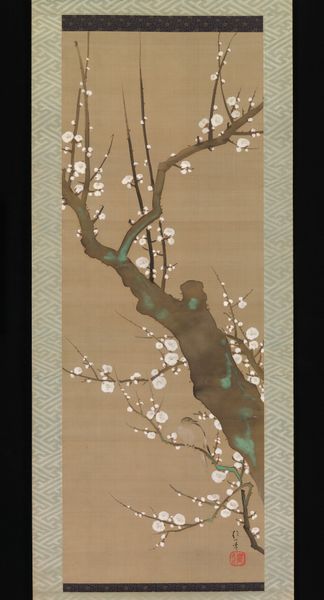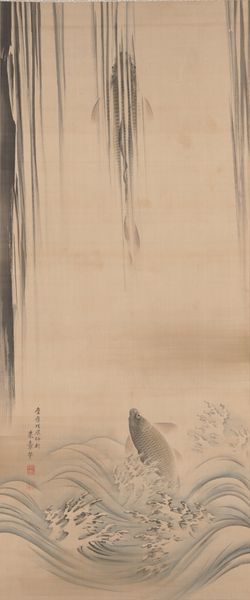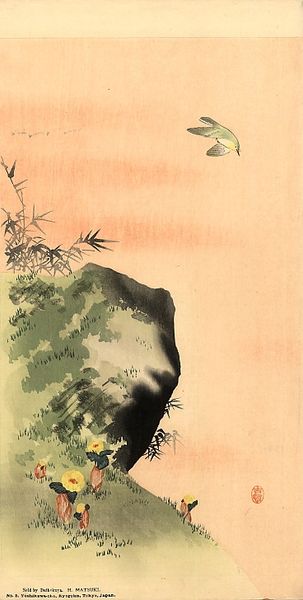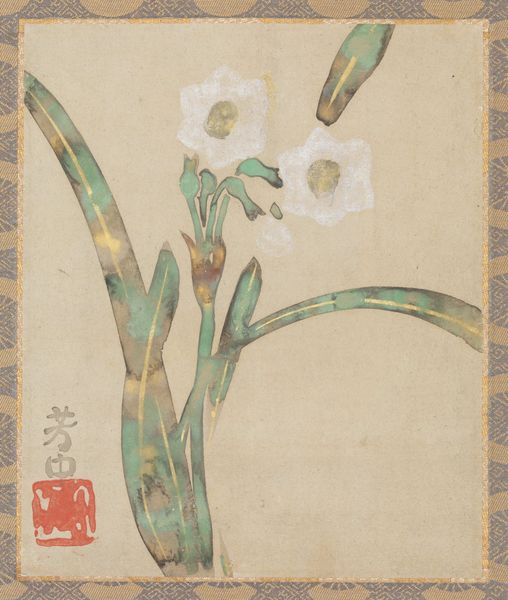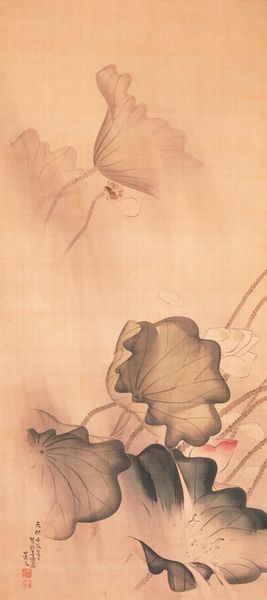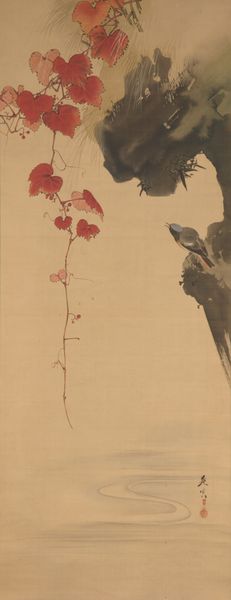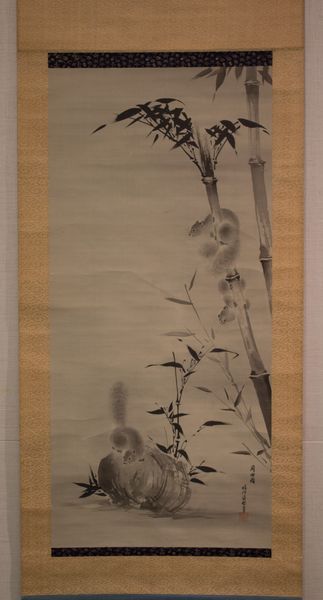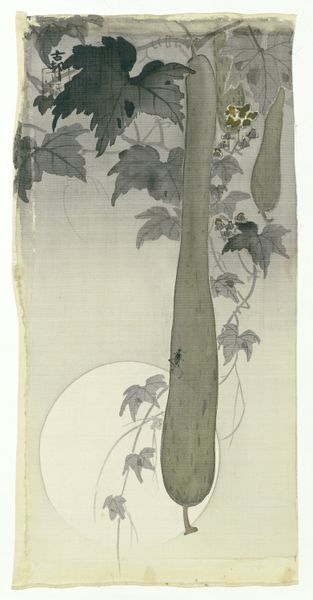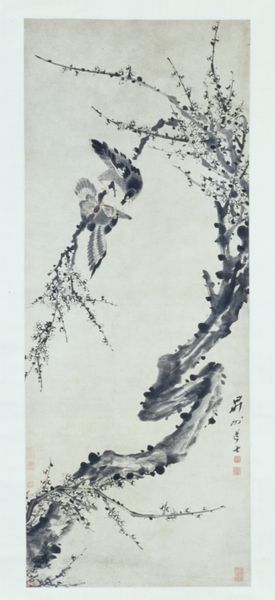
watercolor, hanging-scroll
water colours
asian-art
landscape
ukiyo-e
watercolor
hanging-scroll
line
watercolor
Dimensions: 45 1/2 × 13 7/8 in. (115.57 × 35.24 cm) (image)79 × 19 3/16 in. (200.66 × 48.74 cm) (mount, without roller)
Copyright: Public Domain
Curator: Immediately, a sense of peaceful melancholy washes over me. It's in the delicate lines, the subdued palette. Editor: Indeed. We're looking at Sakai Hōitsu's "Wren on Camellia Branch," a watercolor hanging scroll, dating from after 1824. It's currently held at the Minneapolis Institute of Art. The subdued palette gives a feeling of quiet refinement and echoes its integration into the Rinpa school tradition. Curator: I find the placement of the wren so intriguing. It’s perched precariously, yet there's such stillness, as if time is suspended. Birds are powerful emblems cross-culturally, but their appearance here is fascinating in its asymmetry. Editor: The off-centered composition definitely evokes that fleeting moment, so often captured in Ukiyo-e prints. The camellia flower too, isn't merely decorative, is it? As flowers they embody notions of beauty and the ephemerality of life, tied into larger societal ideals that echo throughout the development of artistic practices in Edo Japan. Curator: Absolutely. The camellia's symbolism resonates deeply – beauty, but also, given its tendency to drop its flower head whole, a poignant symbol of noble death or acceptance. It invites a contemplative interpretation, doesn’t it? The delicate brushstrokes feel imbued with intention. Editor: I think that consideration around symbolism would be true to consider given the era and socio-political context, yes. Consider this art was being produced during a time when there was great attention paid to ideas around harmony with nature, which certainly had direct political implications, no? Curator: Of course, seeing these elements coexisting creates a beautiful tension. You have the transient beauty of the flower, the delicate vulnerability of the wren, all framed within the stability of the aged tree branch. A quiet rumination of how permanence and impermanence interact. Editor: Yes, it is a deceptively layered image, one that invites prolonged reflection, making us conscious of the natural world, its continuous cycle of change. A simple yet powerful political statement embedded in such refined beauty. Curator: Absolutely. Thank you for the illumination. It’s pieces like these that keep me drawn to the capacity images have in shaping emotional meaning. Editor: Indeed, a conversation between aesthetics and ideology made visible.
Comments
No comments
Be the first to comment and join the conversation on the ultimate creative platform.
